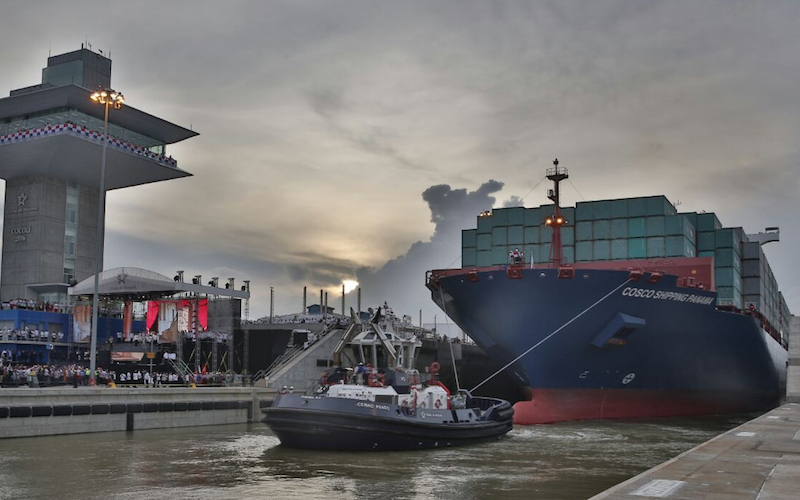
Translating the Panama Canal: What does Expansion Mean?
The Panama Canal’s recent expansion will revive international maritime trade in an era of political and economic tribulation. The 7-year long renovation enables doubling the transportation capacity through this strategic global conduit to an annual 600 million tons of cargo.
The number of vessels crossing the isthmus will be virtually the same as today – approximately 14,000 every year – although these will be longer, higher and capable of carrying 12,500 containers in one trip, almost triple the quantity of vessels able to transcend this zone previously.
Debate sways to the beat of singer Ruben Blades’ “Patria” during the inaugural festivals as the expansion’s true implications continue to be analyzed.
Immediate Appeal
During the inaugural celebrations accompanied by local and foreign leaders, Panamanian President Juan Carlos Varela called the modernized canal the “route that unites the world.”
The president admitted that before coming to power he did not support the expansion of the Panama Canal. Now, as jefe del estado of the Central American country, he proclaims that the work can give Panama a “better future,” expecting to triple revenues received annually that currently stand at one billion dollars.
Indeed, the new infrastructure is expected to generate more wealth to Panama. The canal has been used to save time and fuel in shipping routes for over a century but with the expansion, 98% of the world’s commercial ships can now pass through the Panama Canal. This opens the route to Neopanamax cargo ships, each carrying up to 14,000 containers, almost three times the capacity of previous freighters.
The government charges a toll of nearly half a million US dollars per ship every day.
Debt and Drama
However, immediate economic benefits remain on the horizon due to an abundance of project consortium problems encountered during the nearly $5.5 billion construction phase. Poor quality of some of the materials, redesigning of parts, crippling union strikes and weather in a country where no rain falls for three months a year have been cited by the Panama Canal Authority as “just some of the issues” although funding has been an issue, as well.
Foreign “Friends”
Foreign investment provided a major contribution to the Panama Canal upgrade. The United States and China are the main funding sources as well as the main users of the trans-oceanic route.
The US holds geopolitical sway in the Canal Zone, having once constructed and governed it and China also holds a significant economic and international relations position because it is a business giant and G8 government that G77 countries therefore court.
Curiously, a multi-billion dollar Chinese firm meanwhile continues to fund the Nicaraguan Canal, a historical antagonist against the Panama Canal, because Nicaragua’s rivers are larger than Panama’s and closer to major global traders.
There are also ongoing talks of a trans-Colombian trade railway – yet another potential competitor to the world famous Panama Canal.
Writing on the Wall
The implications of the Panama Canal’s expansion extend beyond Panama and even maritime trade. Economic grandeur, quality maintenance in a world that craves good, cheap products and most importantly foreign debt stand in the shadow of troubled coordination efforts. Politics proves itself a game of competition and submission.
Whether the Panama Canal can prosper despite troublesome markets and aspiring competitors down the road, will likely depend on where we are collectively in the future.

